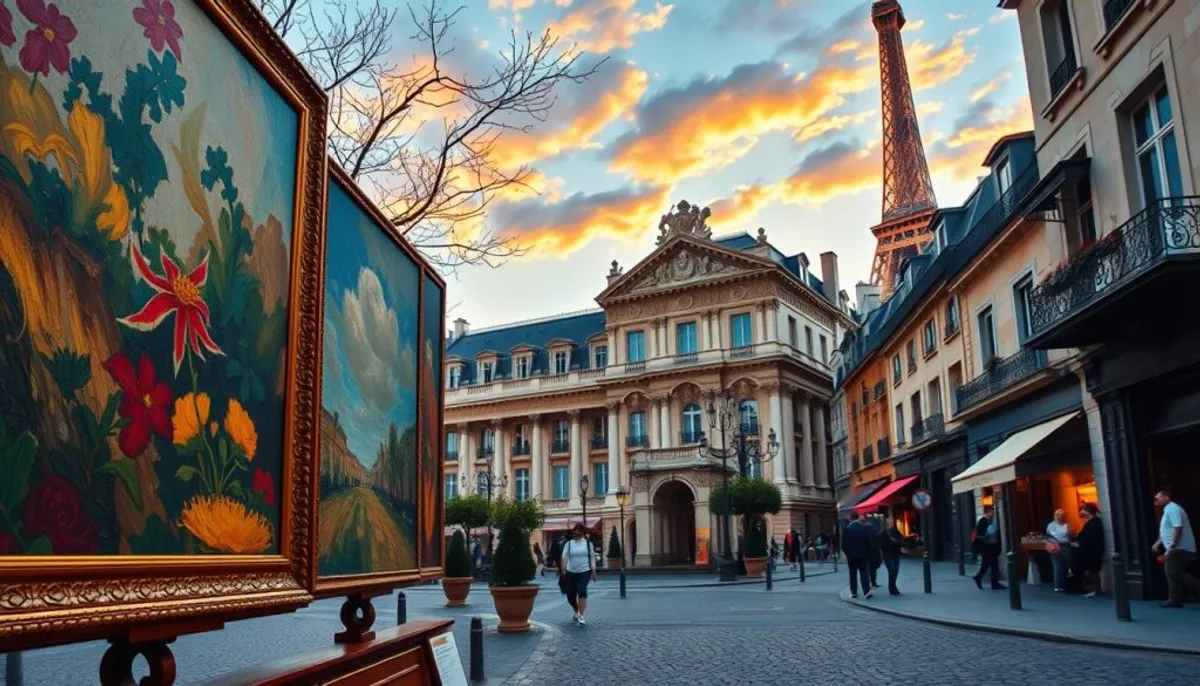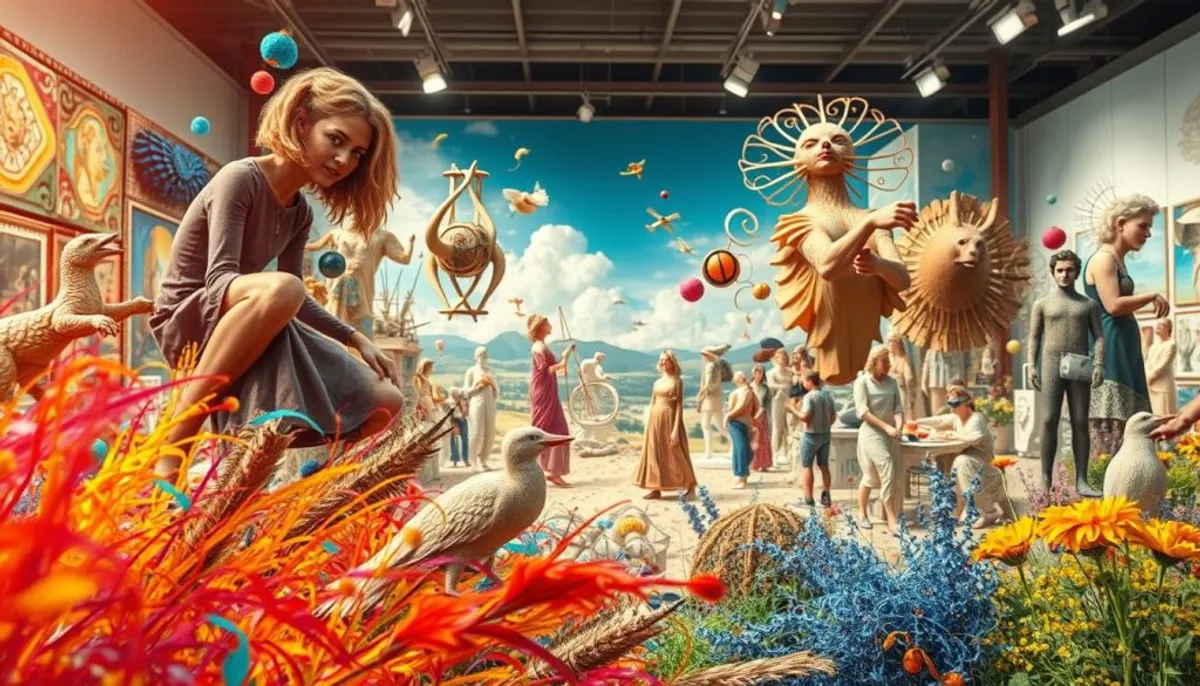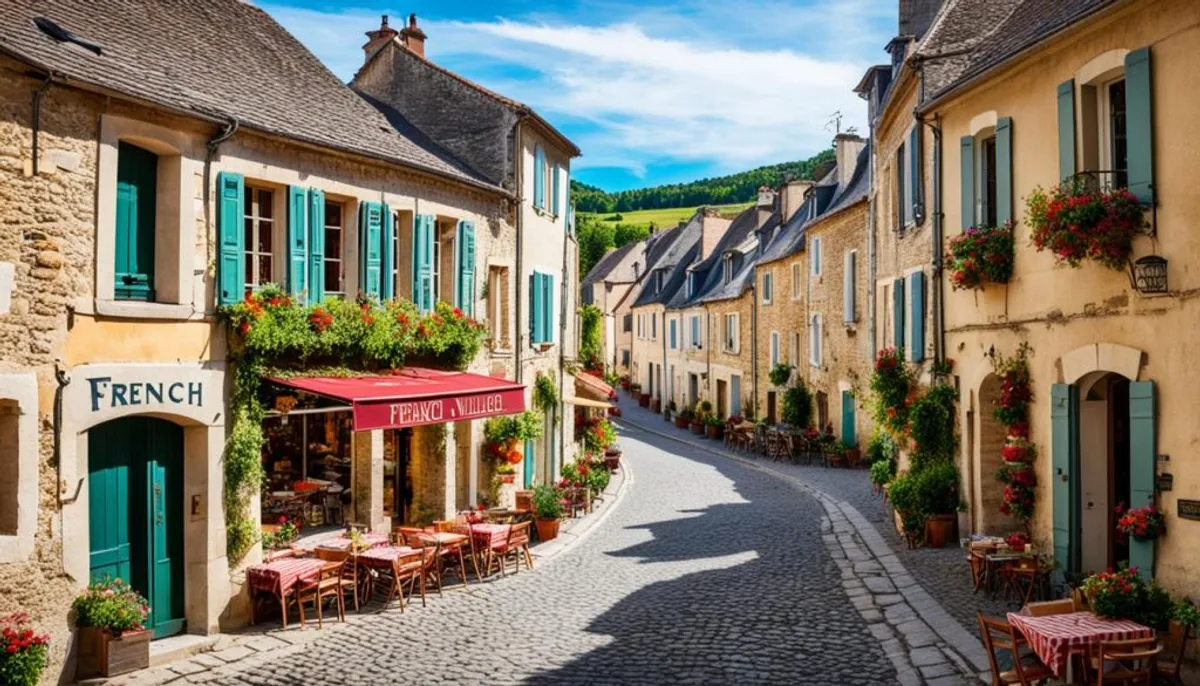France, the cradle of a rich and varied culture, fascinates the entire world with its French arts and its cultural heritage. From medieval universities to contemporary artistic practices, French culture has evolved while preserving its essence.
The University of Paris, founded in the 12th century, is a testament to the historical roots of education in France. This academic tradition has helped shape the cultural identity of the country, influencing the arts and thought.

Diversity is at the heart of French culture. With around 14 million people from minorities, France offers a unique blend of cultural influences. This richness is reflected in the French arts, creating a dynamic and innovative artistic scene.
The French language, a pillar of culture, shines internationally. Recognized by the UN and UNESCO, it carries the values and the French way of life around the world. French culture is also an art of debate, refined politeness, and a love for the arts that continue to captivate and inspire.
The French cultural heritage and its global influence
France, the cradle of a rich history and traditions, has long radiated culturally across the world. Its influence has extended beyond its borders, shaping art, literature, and thought on an international scale.
The historical origins of French culture
The history of France is marked by the creation of numerous cultural institutions. As early as the 12th century, French universities, such as the Sorbonne in Paris, played a crucial role in the intellectual development of Europe. These centers of knowledge contributed to forging France's unique cultural identity.
The international influence of French art
French art has left an indelible mark on the global stage. From the Impressionists to the Enlightenment writers, French creativity has shone beyond borders. Today, this influence continues through a network of cultural institutions abroad.
| Institution | Global Presence | Impact |
|---|---|---|
| Alliance française | 832 Alliances in 131 countries | Promotion of the French language and culture |
| Institut français | 98 institutes worldwide | External cultural action |
| French high schools | 496 establishments in 137 countries | French education internationally |
The role of cultural institutions
The French cultural institutions play an essential role in preserving and promoting cultural diversity. The Académie française, guardian of the language, and the Ministry of Culture work together to maintain the vitality of French cultural heritage. These efforts contribute to the longevity of French traditions and their dissemination around the world.
What culture: exploring contemporary artistic practices
French culture is constantly evolving, reflecting the richness of its cultural diversity. The arts and literature are transforming, introducing new ways to express and participate.
The different forms of artistic expression
The French artistic scene is profoundly rich and diverse. It encompasses traditional arts such as painting and sculpture, as well as more recent expressions like installations and performances. This diversity allows everyone to find their personal expression.

The development of amateur practices
Amateur artistic practices are experiencing significant growth. The Ministry of Culture supports this movement through numerous national associations and popular education federations. These efforts increase access to culture for all, thereby enriching the French artistic landscape.
The impact of digital technology on the arts
Digital technology is revolutionizing the arts in France. It offers new tools for creation and dissemination, allowing artists to explore new dimensions. Digital media play a crucial role in cultural discovery, helping to bridge the digital divide.
| Artistic field | Impact of digital technology |
|---|---|
| Visual arts | Creation of digital works, virtual exhibitions |
| Music | Computer-assisted production, streaming |
| Literature | Digital books, online collaborative writing |
The exploration of contemporary artistic practices reveals a dynamic and inclusive French culture. Whether through painting, music, or literature, the arts shape the cultural identity of the country. They open up to the world, promoting diversity and creative expression.
The French language as a cultural pillar
The French language plays an essential role in the cultural heritage of France. Since the Ordinance of Villers-Cotterêts in 1539, it has been officially recognized as the language of law and administration. This historic decision marked the beginning of a long linguistic tradition, thereby shaping national identity.
The influence of the French language far exceeds its hexagonal borders. It plays a predominant role in international diplomatic circles, reflecting its prestige and global importance. This international presence reinforces the cultural radiance of France.
The French literature illustrates the expressive power of this language. Authors like Victor Hugo, Molière, or Simone de Beauvoir have shaped the history of France through their writings. The French language has played a crucial role in the transmission of ideas and values that have shaped French society.
To preserve this precious heritage, France implements various initiatives. The Académie française has been safeguarding the language since 1635, while institutions like the Alliance Française promote its learning worldwide. These efforts reflect the importance placed on the language as a vector of French culture.
| Aspect | Impact on French culture |
|---|---|
| Literature | Transmission of ideas and values |
| Diplomacy | International influence |
| Education | Preservation of linguistic heritage |
The French architectural and museum heritage
The cultural heritage of France, rich in history and diversity, is reflected in its architecture and museums. France is home to a treasure of 1,216 Museums of France, witnesses to the history and culture of this country.
The major national museums
National museums represent 5% of the Museums of France and are managed by the state. The Louvre, for example, plays a crucial role in the preservation and dissemination of French art. The 2002 law aims to ensure access to culture for all, influencing modern museographic projects.

Iconic historical monuments
French architecture boasts numerous jewels, including the Cathedral of Reims, listed as a UNESCO World Heritage site since 1991. These monuments tell the story of France and attract visitors from around the world during events like the European Heritage Days.
The conservation of heritage
The conservation of French cultural heritage is a constant challenge. In the face of declining public funding, museums are diversifying their resources. Approximately 80% now come from sources other than the state, such as businesses and tourism. This evolution pushes institutions to innovate, notably through digital platforms and mediation exhibitions.
| Type of management | Percentage of Museums of France |
|---|---|
| State | 5% |
| Local authorities | 82% |
| Non-profit private legal entities | 13% |
Living cultural traditions
France is famous for its cultural traditions, essential to its identity. They manifest in daily life and annual festivities. These traditions are deeply rooted in French society.
French gastronomy
The French gastronomy plays a crucial role in the country's traditions. It is recognized worldwide and was declared an intangible cultural heritage by UNESCO in 2010. French cheeses and wines illustrate the culinary richness of each region.
Cultural festivals and events
France hosts a variety of cultural events throughout the year. The Cannes Film Festival, a prestigious cinematic event, attracts global celebrities in May. The Heritage Days, in September, offer the opportunity to visit historical sites that are usually closed for free.
The performing arts
Theater, dance, and music are essential in French culture. The Avignon Festival, founded in 1947, is the largest theater and live performance event. It attracts thousands of spectators and artists each year, enriching the French cultural tradition.
These living cultural traditions shape the French identity and attract visitors from around the world. They demonstrate the richness and diversity of French cultural heritage.
Conclusion
French culture, rich and diverse, continues to evolve in the face of societal transformations. Since the 1960s, the cultural landscape has undergone a major transformation. It has evolved from a centralized approach to a more decentralized one. This evolution has fostered the emergence of increased cultural diversity, enriching French cultural heritage.
Recent statistics highlight the significant impact of culture on the economy and tourism in France. Despite the challenges of the pandemic, which led to a decline in entries to museums and heritage sites, the cultural sector has shown its resilience. The slight increase in entries in 2021 to 20.5 million entries attests to the enduring importance of culture in French society.
In response to the question “what culture,” we can affirm that it is an essential pillar of French identity. It contributes to personal and collective development. Although the precise effects on educational success and the development of critical thinking remain to be quantified, it is undeniable that cultural activities play a crucial role. They contribute to social cohesion and individual flourishing. The future of French culture lies in its ability to combine tradition and innovation, preserving its heritage while embracing new technologies and global influences.
RelatedRelated articles


